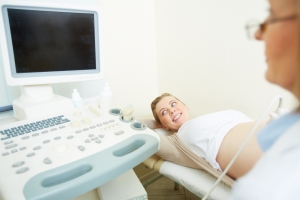The menstrual cycle is a natural part of life for many women, but it often brings along discomfort, cramps, bloating, and fatigue. As the Best Gynecologist in Delhi would emphasize, the food you eat during your period can significantly influence how you feel, helping to alleviate symptoms and provide your body with the nutrients it needs. In this comprehensive guide, we'll explore the best foods to eat during your period and why they are beneficial for your health and well-being.
Understanding Your Body's Nutritional Needs During Periods
When menstruating, your body undergoes hormonal changes that can lead to various physical and emotional symptoms. Proper nutrition can help mitigate these symptoms, stabilize mood, and boost energy levels. During this time, focus on foods that are rich in:
- Iron: To compensate for blood loss.
- Magnesium: To relieve muscle cramps.
- Omega-3 Fatty Acids: To reduce inflammation.
- Complex Carbohydrates: To maintain energy levels.
- Vitamins B and C: To support overall health and reduce fatigue.
Best Foods to Eat During Periods
1. Leafy Greens
Leafy greens like spinach, kale, and Swiss chard are excellent sources of iron and magnesium. These nutrients help combat fatigue caused by blood loss and reduce cramps by relaxing your muscles.
How to Include:
- Add spinach to smoothies or salads.
- Prepare a warm kale and quinoa bowl.
2. Fruits
Fruits like bananas, oranges, and watermelons are packed with vitamins, minerals, and natural sugars that provide an instant energy boost. Bananas are particularly rich in potassium, which can reduce bloating and muscle cramps.
How to Include:
- Snack on a banana with almond butter.
- Make a fresh fruit salad with oranges and watermelon.
3. Whole Grains
Whole grains such as oats, quinoa, and brown rice are rich in complex carbohydrates and fiber, which help stabilize blood sugar levels and keep you feeling full longer.
How to Include:
- Start your day with a bowl of oatmeal topped with berries.
- Serve meals with brown rice or quinoa.
4. Fatty Fish
Salmon, mackerel, and sardines are excellent sources of omega-3 fatty acids, which have anti-inflammatory properties. These fatty acids can reduce the severity of menstrual cramps and improve mood.
How to Include:
- Grill salmon and serve with roasted vegetables.
- Add sardines to a whole-grain pasta dish.
5. Dark Chocolate
Dark chocolate with at least 70% cocoa is not only a delicious treat but also a good source of magnesium. It can help reduce stress, improve mood, and satisfy your sweet cravings.
How to Include:
- Enjoy a small square of dark chocolate as a snack.
- Melt it and drizzle over fresh fruit.
6. Nuts and Seeds
Almonds, walnuts, flaxseeds, and chia seeds are packed with healthy fats, magnesium, and protein. They provide sustained energy and reduce inflammation.
How to Include:
- Add chia seeds to your morning smoothie.
- Snack on a handful of mixed nuts.
7. Legumes
Lentils, chickpeas, and beans are high in iron and protein, making them excellent for replenishing the nutrients lost during menstruation.
How to Include:
- Make a lentil soup or stew.
- Add chickpeas to salads or roast them as a snack.
8. Herbal Teas
Herbal teas like chamomile, ginger, and peppermint can provide relief from bloating, cramps, and nausea. These teas also have calming properties that reduce stress.
How to Include:
- Sip on chamomile tea before bedtime.
- Drink ginger tea during the day to soothe cramps.
9. Yogurt
Rich in probiotics and calcium, yogurt supports gut health and reduces bloating. It also contains vitamin D, which can help alleviate PMS symptoms.
How to Include:
- Have a bowl of plain yogurt with honey and nuts.
- Add yogurt to smoothies for a creamy texture.
10. Vegetables
Cruciferous vegetables like broccoli and Brussels sprouts are rich in vitamins and minerals that can help reduce water retention and bloating.
How to Include:
- Stir-fry broccoli with garlic and olive oil.
- Roast Brussels sprouts for a crunchy side dish.
Foods to Avoid During Periods
While certain foods can alleviate symptoms, others can exacerbate them. Here are some foods to limit or avoid during your period:
- Caffeinated Drinks: Excess caffeine can increase anxiety, irritability, and bloating.
- Sugary Foods: High-sugar foods can cause energy spikes and crashes, worsening mood swings.
- Processed Foods: Chips, cookies, and other processed snacks are high in sodium, which can lead to water retention and bloating.
- Alcohol: Drinking alcohol can dehydrate you and intensify menstrual cramps.
- Spicy Foods: Spicy dishes may upset your stomach and cause discomfort.
Hydration and Its Importance
Staying hydrated is vital during your period. Drinking plenty of water helps reduce bloating, improves digestion, and prevents headaches. Aim for at least 8–10 glasses of water daily and consider herbal teas for added benefits.
Meal Plan for Period Days
Here's a simple meal plan to follow during your period:
Breakfast:
- Oatmeal with almond milk, fresh berries, and chia seeds.
Mid-Morning Snack:
- A banana with a handful of walnuts.
Lunch:
- Grilled salmon with quinoa and steamed broccoli.
Afternoon Snack:
- A small square of dark chocolate and chamomile tea.
Dinner:
- Lentil soup with a side of roasted Brussels sprouts.
Evening Snack:
- A bowl of yogurt with honey and flaxseeds.
Conclusion
What you eat during your period can significantly influence your physical and emotional well-being. Incorporating nutrient-rich foods like leafy greens, fatty fish, whole grains, and fruits can alleviate cramps, reduce bloating, and boost energy. Avoid processed and sugary foods that may worsen symptoms, and stay hydrated to maintain optimal health.
By focusing on wholesome, nutrient-dense meals, you can navigate your menstrual cycle more comfortably and maintain your overall health. Listen to your body, nourish it well, and consult a healthcare professional if you experience severe symptoms.






